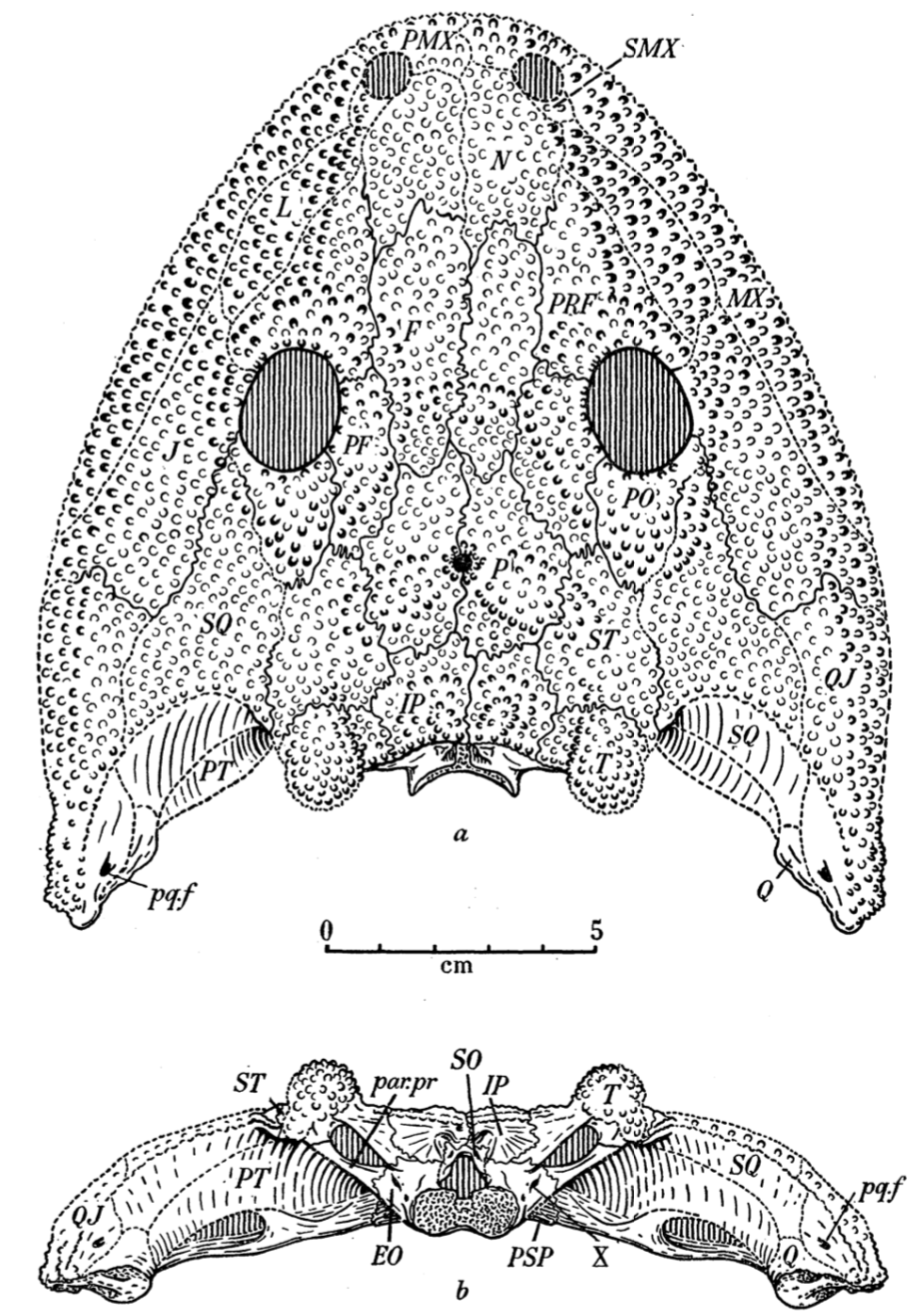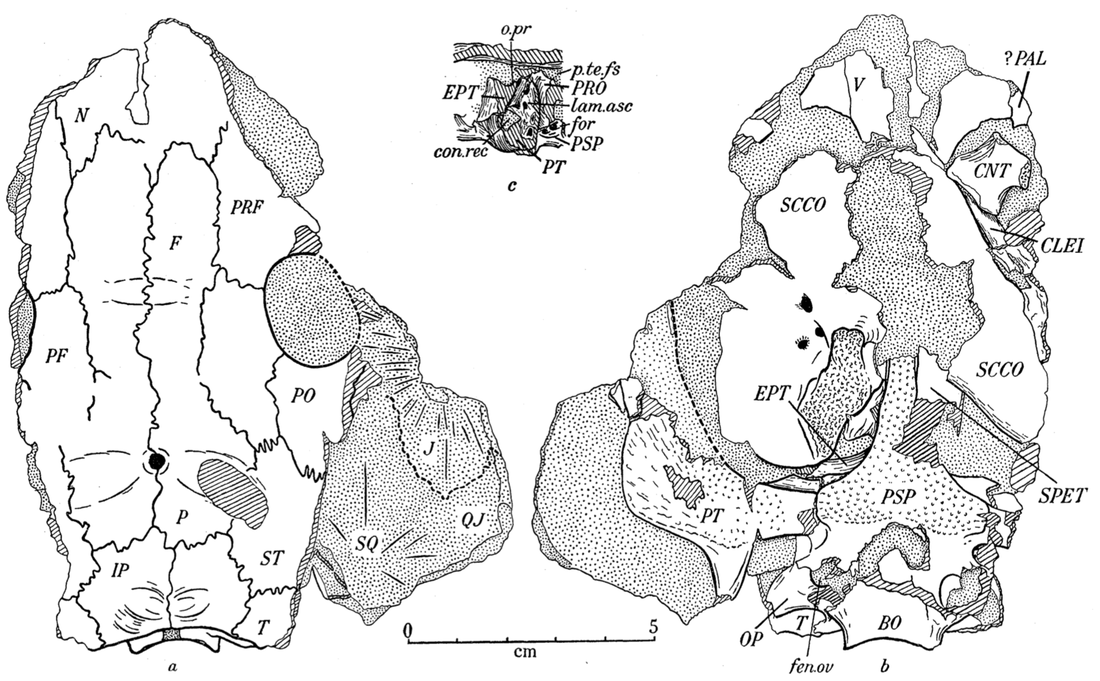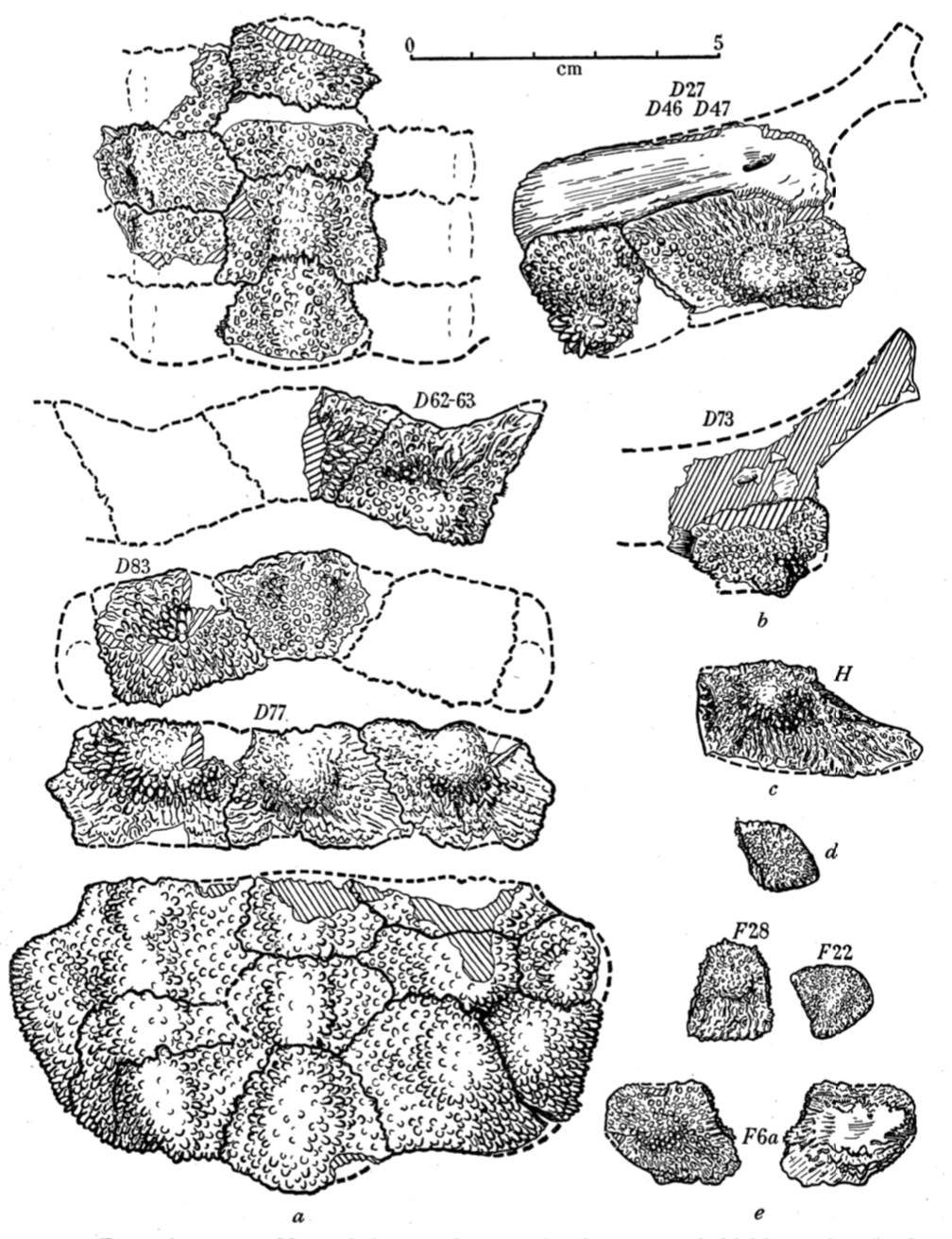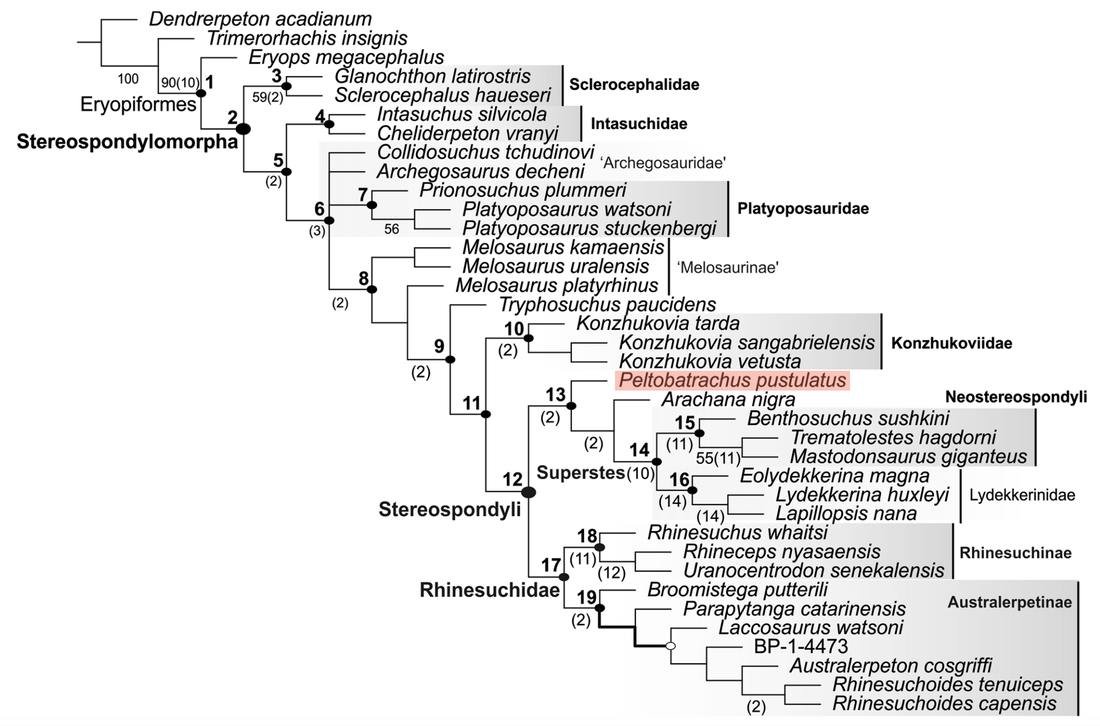|
Been on a bit of a hiatus lately (busy month academically), but we're back for #TemnospondylTuesday! I'm still musing whether to do another themed series (probably starting in two weeks in November), so between now and then, I'll cover one oddball each week. Up this week is Peltobatrachus, a peculiar late Permian temnospondyl from Tanzania! As a bonus, it has a toy version that you can buy for not an exorbitant amount of money! Etymology Peltobatrachus is a pretty good name. It derives from two Greek roots that collectively mean 'shield frog,' in reference to its labyrinthodont affinities and the extensive dermal armour. It's kind of a funny name because it reminds me of schildkröte, which is the German word for turtle but which literally translates to 'shield toad.'
The phylogenetic position of Peltobatrachus Unsurprisingly, figuring out where something like Peltobatrachus fits is very difficult. Panchen (1959) originally hypothesized it to be a close relative of the plagiosaurids, which would have in turn suggested a separation of plagiosaurids from virtually all other Mesozoic temnos. In fact, he spent 16 pages making compelling arguments (some perhaps a little less compelling than others) in favour of this. In my opinion, it seems that Panchen was particularly taken by the similarity of the pustulated ornamentation of Peltobatrachus, which was and still remains, otherwise found only in some plagiosaurids, and then from there, his comparisons are increasingly restricted (selective?). There definitely remain some pretty pronounced differences from plagiosaurids that can't really be accounted for in any way. For example, the remarkably terrestrial morphology compares far more favourably with virtually any other terrestrial temnospondyl (Panchen compared to Eryops for example), which doesn't imply a relationship with those taxa, but also doesn't suggest much of any affinities with plagiosaurids. The particular flavour of stereospondyl vertebrae found in Peltobatrachus is truly similar to plagiosaurids in having a single large centrum with the rib articulations formed between adjacent centra, rather than being fully within a single centrum, but there are plenty of cautionary tales about relying too much on vertebral type to infer relationships (see lepospondyls, for example). Histological sampling of the osteoderms (Witzmann & Soler-Gijón, 2010), which were compared to a few other taxa, showed that those of Peltobatrachus are most comparable to that observed in plagiosaurids, although that may reflect a similar purpose rather than a close phylogenetic relationship. Of course, Panchen's work was in the pre-quantitative phylogeny era. When Peltobatrachus is put into phylogenies, it is typically agreed upon to be a basal stereospondyl whose phylogenetic relationships are probably complicated by a poor record of Paleozoic stereospondyls; it has rarely been placed in a formalized family, although 'Peltobatrachidae' shows up from time to time (e.g., Ruta et al., 2007).
Peltobatrachus in context Peltobatrachus occupies an interesting time in temnospondyl evolution. For one, it's very terrestrial and relatively large-bodied (15 cm skull length; >50 cm reconstructed body length). From the Carboniferous and into the middle Permian, many temnospondyls are similarly terrestrial, like the dissorophoids that I work on for my dissertation, and of a similar size. But by the late Permian, when Peltobatrachus was stomping around Africa, most temnospondyls were aquatic stereospondylomorphs that passed through the Permo-Triassic extinction and that radiated during the Mesozoic. Essentially all terrestrial Mesozoic temnospondyls are lissamphibians (if you buy that temnospondyls give rise to lissamphibians) and/or very small-bodied forms like Lydekkerina. Additionally, the African record of temnospondyls has been relatively poor outside of the well-known Karoo Basin in South Africa, which spans the late Permian to the Early Triassic - other temnospondyls recovered from the interior of the continent have often proven to be similarly difficult to place phylogenetically (or been recovered in unexpected positions) and exhibit marked anatomical differences from the proposed closest relatives (e.g., Nigerpeton and Saharastega from the late Permian of Niger). Further exploration in these regions will hopefully produce more material that can better contextualize regional patterns of temnospondyl evolution. Refs
David Marjanović
10/23/2019 10:32:50 am
"a 2017 JVP memoir" Comments are closed.
|
About the blogA blog on all things temnospondyl written by someone who spends too much time thinking about them. Covers all aspects of temnospondyl paleobiology and ongoing research (not just mine). Categories
All
Archives
January 2024
|





 RSS Feed
RSS Feed
